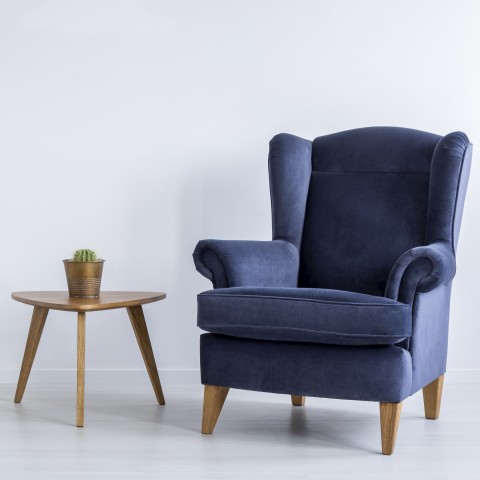
Are you eager to start speaking in Finnish, but worry that you’ll need to tackle a ton of complex grammar rules first? You’ll be glad to hear that the best way to learn a language is actually to jump straight in and start speaking it as soon as possible. And learning the most common Finnish sentence patterns is a great way to start!
Our guide will walk you through the top ten sentence patterns that you’ll be using again and again in everyday conversations with Finns. We’ll be keeping things fairly basic so that you can get started fast!
 Table of Contents
Table of Contents- Linking Two Nouns: A is B
- Describing Things: A is [Adjective]
- Expressing “Want”: I Want (to)…
- Expressing “Need”: I Need (to)… / I Have to…
- Expressing “Like”: I Like (to)… / I Love (to)…
- Confirming That You Can Do Something: I Can…
- Stating How You’re Feeling: I Am… / I Feel…
- The 5 Ws (Who, What, When, Where, Why) and How
- Asking for Permission: Can I…? / Could I…?
- Turning a Statement into a Question: Do You…?
- Final Thoughts
1. Linking Two Nouns: A is B

Here’s a very simple Finnish language sentence structure that allows you to link two nouns. The verb we’re using is olla (“to be”).
- Matti on ystäväni. (“Matti is my friend.”)
- Siskoni on insinööri. (“My sister is an engineer.”)
- Tämä on työpaikkani. (“This is my workplace.”)
- Helsinki on Suomen pääkaupunki. (“Helsinki is Finland’s capital city.”)
- Se oli hyvä idea. (“It was a good idea.”)
Notice the use of the possessive suffix -ni in the first three examples. In these examples, the possessive suffix stands for the English word “my.” You can also add the word minun (“my”) and say minun ystäväni (“my friend”), but it isn’t necessary.
For more about Finnish possessive suffixes, look at the relevant section of this Wikipedia page.To get you started on creating more sentences like those above, take a look at our collection of 100 Finnish core words. And here, you can find how to conjugate the verb olla (“to be”) for even more possibilities.
Helsinki on Suomen pääkaupunki. (“Helsinki is Finland’s capital city.”)
2. Describing Things: A is [Adjective]
We’ll stick to the verb olla (“to be”) for now, but this time, we’ll use it with an adjective.
- Henri on komea. (“Henri is handsome.”)
- Tämä auto on uusi. (“This car is new.”)
- Huomisen tapaaminen on erittäin tärkeä. (“Tomorrow’s meeting is extremely important.”)
- Sinä olet todella ystävällinen. (“You are really friendly.”)
- Elokuva, jonka katsoimme eilen, oli pelottava. (“The film we watched yesterday was scary.”)
But wait, what if you want to say that A is not B? In that case, you need to inflect the negative particle ei (“no”) and use the present base form of olla (“to be”):
- Minä en ole kotona. (“I am not home.”)
- Sinä et ole opiskelija. (“You are not a student.”)
- Se ei ole totta. (“It’s not true.”)
- Me emme ole lomalla. (“We are not on holiday.”)
- Te ette ole nukkumassa. (“You are not sleeping.” – plural or polite singular “you”)
- He eivät ole valmiita lähtemään. (“They are not ready to go.”)
Why not put together some of your own Finnish phrases and sentences? Get creative using this list of the most common Finnish adjectives!
Minä en ole kotona. (“I am not home.”)
3. Expressing “Want”: I Want (to)…
Whether you’re in a restaurant or at a friend’s place, being able to say what you want in Finnish will come in handy for sure! We’ll use the verb haluta (“to want”), and will cover a direct way (expressed with the indicative mood) and a more polite way (expressed with the conditional mood) to express want:
- Minä haluan… (“I want…”)
- Minä haluaisin… (“I would like…”)
Here are some Finnish sentence examples:
- Minä haluan hernekeittoa. (“I want pea soup.”)
- Minä haluan nähdä sinut. (“I want to see you.”)
- Minä haluan tulla mukaan. (“I want to come along.”)
And a few examples using the more polite haluaisin (“I would like”):
- Minä haluaisin tilata. (“I would like to order.”)
- Minä haluaisin ehdottaa jotakin. (“I would like to suggest something.”)
- Minä haluaisin että tulet häihimme. (“I would like you to come to our wedding.”)
Tip: It’s fine to drop the word minä (“I”) in these examples, because it’s already obvious from the conjugation of the verb that you’re talking about yourself.
And of course, it can be equally important to say when you don’t want something! Simply replace haluan (“I want”) with en halua (“I don’t want”).
- En halua lähteä ulos tänään. (“I don’t want to go out today.”)
Fancy trying some traditional Finnish dishes (besides pea soup)? Learn more about Finnish food in this lesson.

4. Expressing “Need”: I Need (to)… / I Have to…
Being able to say what you need is even more important than being able to express what you want! Just think of how often you end up looking for a bathroom in an unfamiliar city…
We’ll tackle “I need” and “I need to” separately. First, let’s take a look at how to use the verb tarvita (“to need”) with a noun.
- Tarvitsen kahvia. (“I need coffee.”)
- Tarvitsen lisää aikaa. (“I need more time.”)
- Tarvitsemme parempia ideoita. (“We need better ideas.”)
- Tarvitsen uuden passin. (“I need a new passport.”)
- Tarvitsemme vastauksen pian. (“We need an answer soon.”)
In the first three examples, the noun is in the partitive case, and in the last two, the accusative case. (Learn more about Finnish noun cases on Wikipedia.)
Next, we’ll take a look at how to say that you need to do something. It’s a bit more complicated!
Construct a sentence like this:
The subject of the sentence in the genitive case, e.g. minun / sinun / meidän (“my” / “your” / “our”) + pitää / täytyy (“have to”) + a verb in the infinitive form.
- Anteeksi, minun pitää lähteä. (“Sorry, I have to leave.”)
- Minun pitää käydä vessassa. (“I have to go to the toilet.”)
- Sinun täytyy tehdä jotakin. (“You have to do something.”)
- Sinun täytyy harjoitella lisää jos haluat onnistua. (“You have to practice more if you want to succeed.”)
- Meidän täytyy vain yrittää uudestaan. (“We just have to try again.”)
Not a fan of coffee? Learn words for other drinks in Finnish.
Minä tarvitsen kahvia! (“I need coffee!”)
5. Expressing “Like”: I Like (to)… / I Love (to)…
Are you eager to get talking about all the things you enjoy and are passionate about? Then this section is for you!
The verbs we’ll focus on are pitää or tykätä (“to like”) and rakastaa (“to love”).
Let’s take a look at some examples of the Finnish sentence structure using pitää (“to like”) + a noun in the elative case:
- Minä pidän hänestä. (“I like him/her.”)
- Minä pidän intialaisesta ruoasta. (“I like Indian food.”)
- Minä pidän raittiista ilmasta. (“I like fresh air.”)
- Minä pidän haastavista lautapeleistä. (“I like challenging board games.”)
- Minä pidän oluesta, mutta juon mieluummin viiniä. (“I like beer, but prefer to drink wine.”)
A common way to express that you like doing something in spoken language is to use the verb tykätä (“to like”) + a verb in the infinitive form:
- Minä tykkään laittaa ruokaa. (“I like to cook.”)
- Minä tykkään herätä aikaisin. (“I like to wake up early.”)
- Minä tykkään poimia marjoja. (“I like picking berries.”)
- Minä tykkään kuunnella rock-musiikkia. (“I like to listen to rock music.”)
- Minä tykkään neuloa sukkia lapsilleni. (“I like to knit socks for my children.”)
If you truly love something or want to emphasize just how much you like it, you can use the verb rakastaa (“to love”) + a noun in the partitive case or a verb in the infinitive form:
- Minä rakastan sinua. (“I love you.”)
- Minä rakastan perhettäni. (“I love my family.”)
- Minä rakastan puhua filosofiasta samanhenkisten ihmisten kanssa. (“I love to talk about philosophy with like-minded people.”)
Dating a Finn? Then you’ll need this lesson on romantic words!
Minä rakastan perhettäni. (“I love my family.”)
6. Confirming That You Can Do Something: I Can…
A word of warning: Finns are usually very modest and aren’t fans of excessive bragging! However, there are situations in which it’s very useful to be able to state that you can do something.
All of these three verbs mean “can,” but note the slight differences in meaning:
- Osata (“have the skills to”)
- Pystyä (“have the ability to”)
- Voida (“to be willing to”)
Let’s look at some specific examples:
- Minä osaan uida. (“I can swim.”)
- Minä osaan puhua suomea. (“I can speak Finnish.”)
- Minä pystyn siihen! (“I can do it!”)
- Minä pystyn olemaan hiljaa, jos todella yritän. (“I can be quiet if I really try.”)
- Minä voin auttaa sinua. (“I can help you.”)
- Minä voin tulla sinua asemalle vastaan. (“I can come and meet you at the station.”)
These sports are popular in Finland—can you play any of them?
7. Stating How You’re Feeling: I Am… / I Feel…
Letting others know how we feel can be really important sometimes! And sometimes, it’s very simple. Just look at these straightforward examples:
- Minä olen onnellinen. (“I am happy.”)
- Minä olen surullinen. (“I am sad.”)
However, when talking about how you’re feeling (especially physically), you’ll typically want to use the following sentence structure:
Minulla on (“I have”) + a noun in the nominative case, such as nälkä (“hunger”).
Let’s take a look at some examples:
- Minulla on nälkä. (“I am hungry.”)
- Minulla on huono olo. (“I am feeling unwell.”)
- Minulla on ikävä sinua. (“I miss you.”)
Learn more words and phrases to describe how you’re feeling, and prepare for emergencies by learning these important phrases.
Minulla on nälkä. (“I am hungry.”)
8. The 5 Ws (Who, What, When, Where, Why) and How
Whether you need to ask for directions or want to get to know someone better, learning how to ask questions should be a top priority for anyone learning Finnish! We’ll get you started by covering the most important question words and how to use them.
- Kuka (“Who”)
- Mikä / Mitä (“What”)
- Milloin (“When”)
- Missä (“Where”)
- Miksi (“Why”)
- Miten (“How”)
Note that question words can be singular or plural, and used in different cases—we’ll keep things simple and focus on the most basic ones here. FinnishPod101.com has more relevant lessons on how to use question words that you can check out, though. Why not start with the word “what”?
Here are the question words we mentioned in action:
- Kuka on Suomen presidentti? (“Who is Finland’s president?”)
- Mikä on hyvä lahja 5-vuotiaalle? (“What is a good gift for a 5-year-old?”)
- Mitä tämä tarkoittaa? (“What does this mean?”)
- Milloin pääset töistä? (“When do you get off work?”)
- Missä haluaisit tavata? (“Where would you like to meet?”)
- Miksi et tullut juhliimme? (“Why didn’t you come to our party?”)
- Miten pääsen täältä keskustaan? (“How do I get from here to the city center?”)
To figure out whether to use mikä or mitä (“what”), follow this rule of thumb: Use mikä when the subject is concrete, defined, or countable. Use mitä when the subject is abstract, undefined, or uncountable.Get even more confident in your question-asking skills by learning the top fifteen questions in Finnish with FinnishPod101.com.
Miten pääsen täältä keskustaan? (“How do I get from here to the city center?”)
9. Asking for Permission: Can I…? / Could I…?
Finns appreciate good manners, and knowing how to ask for something politely will always help you make a good first impression.
The verbs we’re going to use are saada and voida.
- Saanko…? (“Can I…?”)
- Saisinko…? (“Could I…?”)
- Voinko…? (“Can I…?”)
- Voisinko…? (“Could I…?”)
Here are a few examples. (Using the equivalent of “could I” is more polite.)
- Saanko ehdottaa jotakin? (“Can I suggest something?”)
- Saisinko ruokalistan? (“Could I have the menu?”)
- Voinko tulla sisään? (“Can I come in?”)
- Voisinko puhua kanssasi? (“Could I talk with you?”)
Learn more about manners and the power of “thank you” in Finland on our blog.
10. Turning a Statement into a Question: Do You…?
Here’s a neat trick that you can use to turn a statement sentence in Finnish into a question. First, take a simple sentence like the ones we looked at earlier in this article:
- Hän on suomalainen. (“He/she is Finnish.”)
Now, switch the verb and the noun around and add -ko or -kö to the verb (use -kö if the verb also contains ä or ö; otherwise, stick to -ko), and your question looks like this:
- Onko hän suomalainen? (“Is he/she Finnish?”)
Here are a few more examples:
- Sinä syöt lihaa. (“You eat meat.”) > Syötkö sinä lihaa? (“Do you eat meat?”)
- Sinä pidät koirista. (“You like dogs.”) > Pidätkö sinä koirista? (“Do you like dogs?”)
- Hän lukee sanomalehtiä. (“He/she reads newspapers.”) > Lukeeko hän sanomalehtiä? (“Does he/she read newspapers?”)
- Elina osti leipää. (“Elina bought bread.”) > Ostiko Elina leipää? (“Did Elina buy bread?”)
Who knew Finnish sentence patterns could be this easy? Why not try your hand at forming more questions like the ones above? Look up more common Finnish verbs in FinnishPod101’s guide to the fifty most common Finnish verbs.
11. Final Thoughts
You’ve now learned the ten most useful Finnish sentence patterns, and are hopefully feeling excited about going out there and using them in real life!
Keep practicing those skills, and do visit FinnishPod101.com anytime to further increase your vocabulary, learn correct pronunciation, and brush up on your grammar!
If you have any questions about this lesson, or if we didn’t cover a sentence pattern you want to know, don’t hesitate to reach out in the comments. We’ll do our best to help!
















